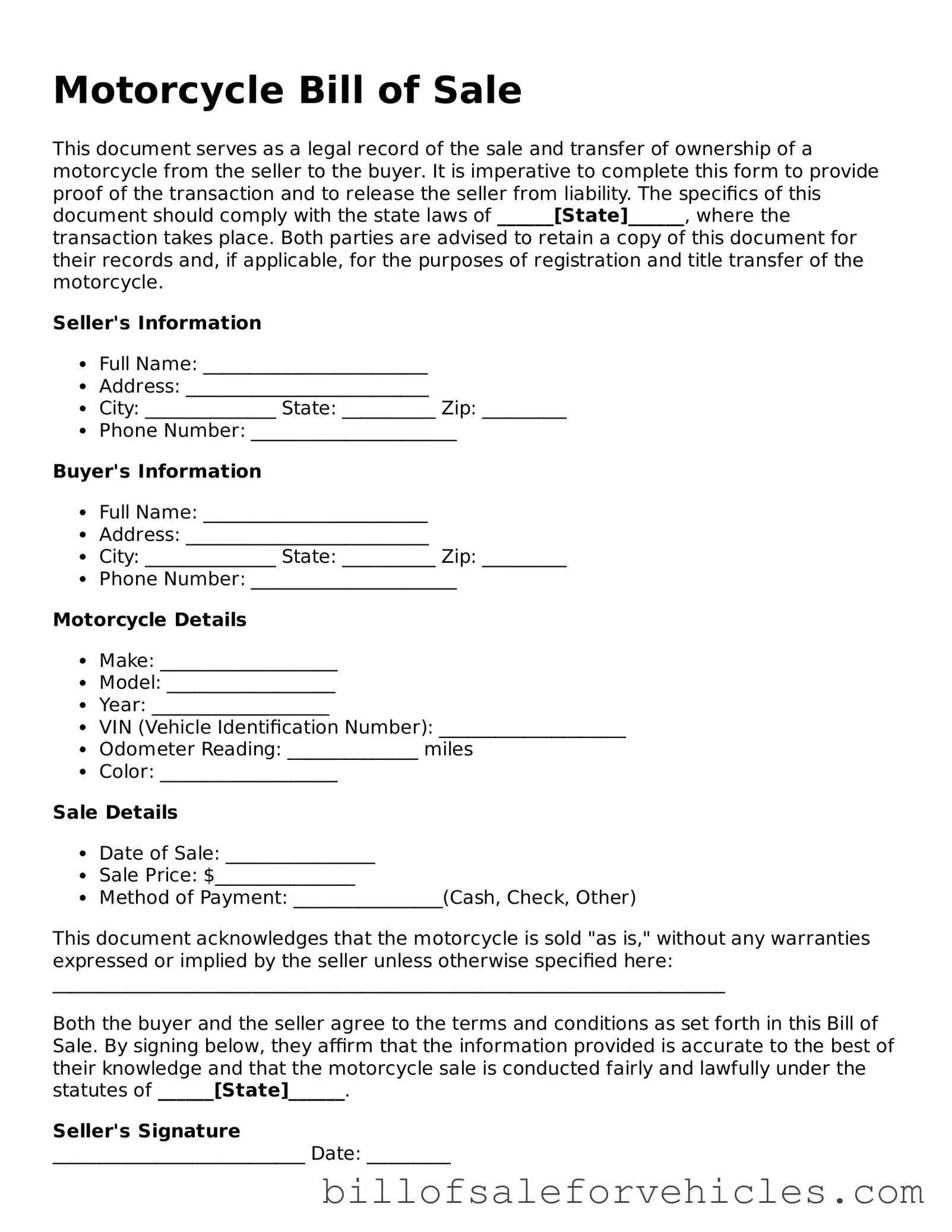Motorcycle Bill of Sale
This document serves as a legal record of the sale and transfer of ownership of a motorcycle from the seller to the buyer. It is imperative to complete this form to provide proof of the transaction and to release the seller from liability. The specifics of this document should comply with the state laws of ______[State]______, where the transaction takes place. Both parties are advised to retain a copy of this document for their records and, if applicable, for the purposes of registration and title transfer of the motorcycle.
Seller's Information
- Full Name: ________________________
- Address: __________________________
- City: ______________ State: __________ Zip: _________
- Phone Number: ______________________
Buyer's Information
- Full Name: ________________________
- Address: __________________________
- City: ______________ State: __________ Zip: _________
- Phone Number: ______________________
Motorcycle Details
- Make: ___________________
- Model: __________________
- Year: ___________________
- VIN (Vehicle Identification Number): ____________________
- Odometer Reading: ______________ miles
- Color: ___________________
Sale Details
- Date of Sale: ________________
- Sale Price: $_______________
- Method of Payment: ________________(Cash, Check, Other)
This document acknowledges that the motorcycle is sold "as is," without any warranties expressed or implied by the seller unless otherwise specified here: ________________________________________________________________________
Both the buyer and the seller agree to the terms and conditions as set forth in this Bill of Sale. By signing below, they affirm that the information provided is accurate to the best of their knowledge and that the motorcycle sale is conducted fairly and lawfully under the statutes of ______[State]______.
Seller's Signature
___________________________ Date: _________
Buyer's Signature
___________________________ Date: _________
Witness (If applicable)
Name: ___________________________
Signature: _______________________ Date: _________
Please note that some states may require this document to be notarized for the sale to be considered valid.
